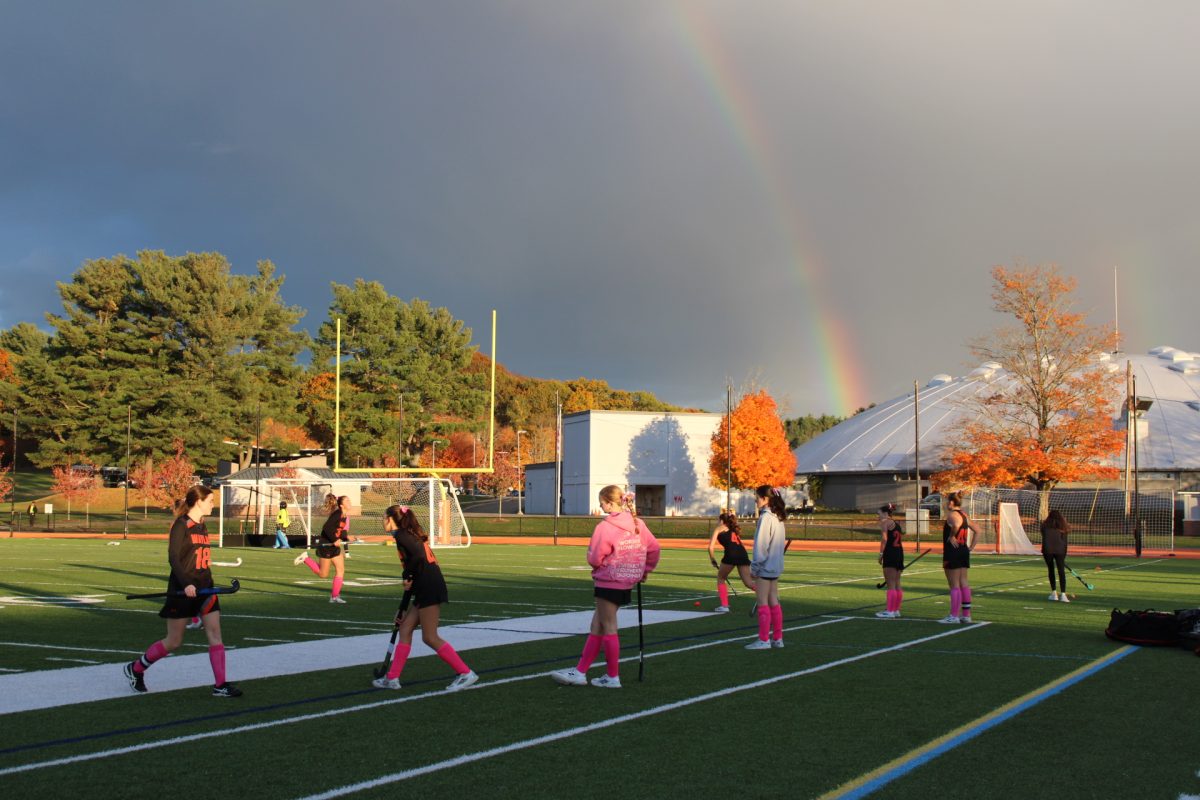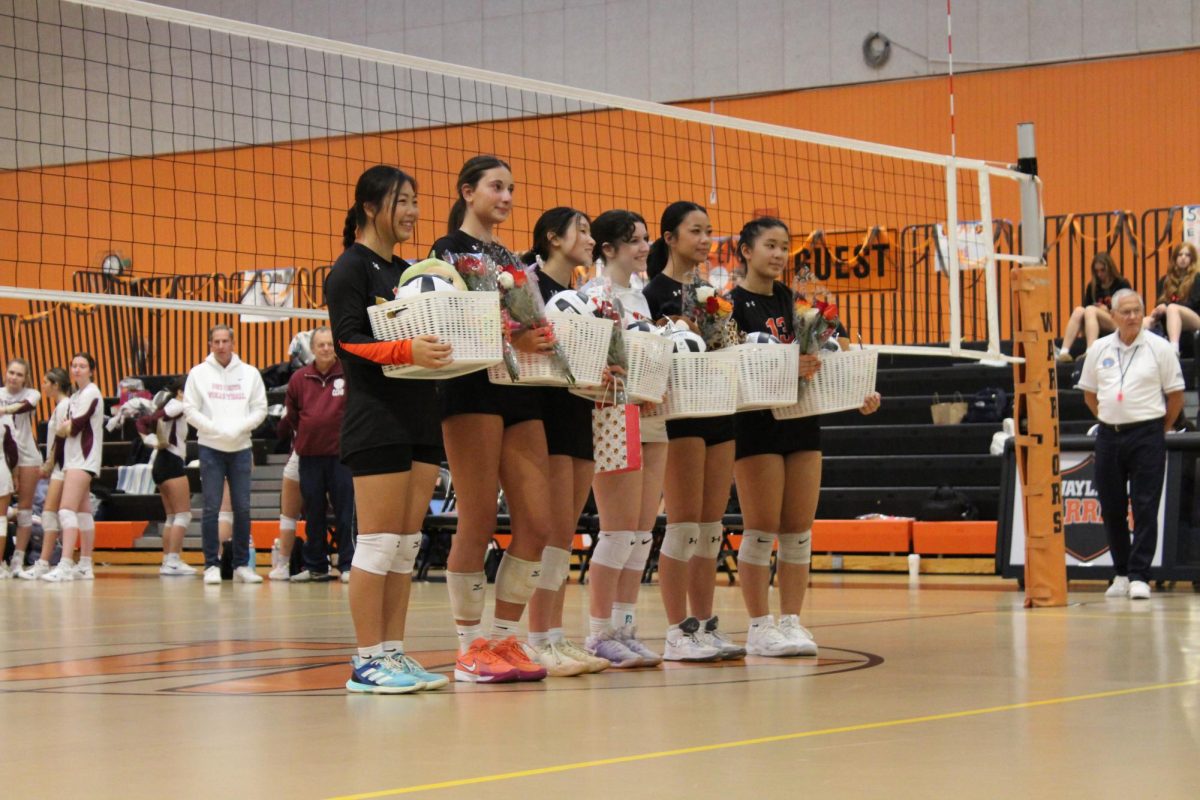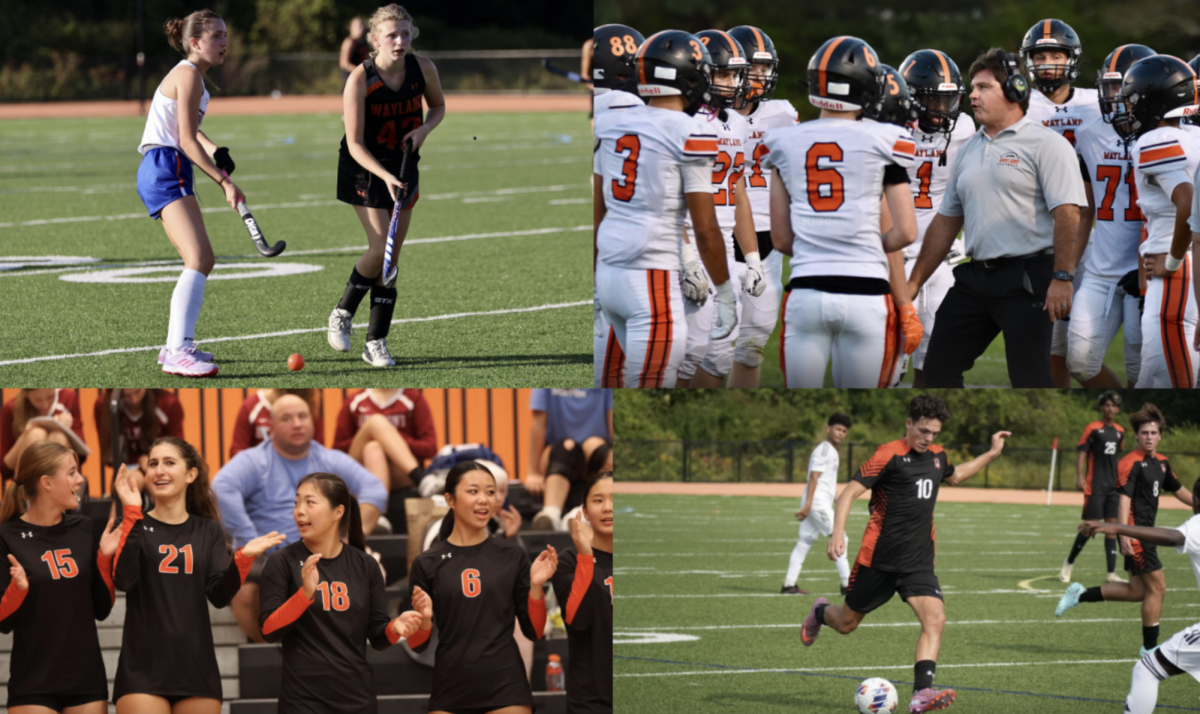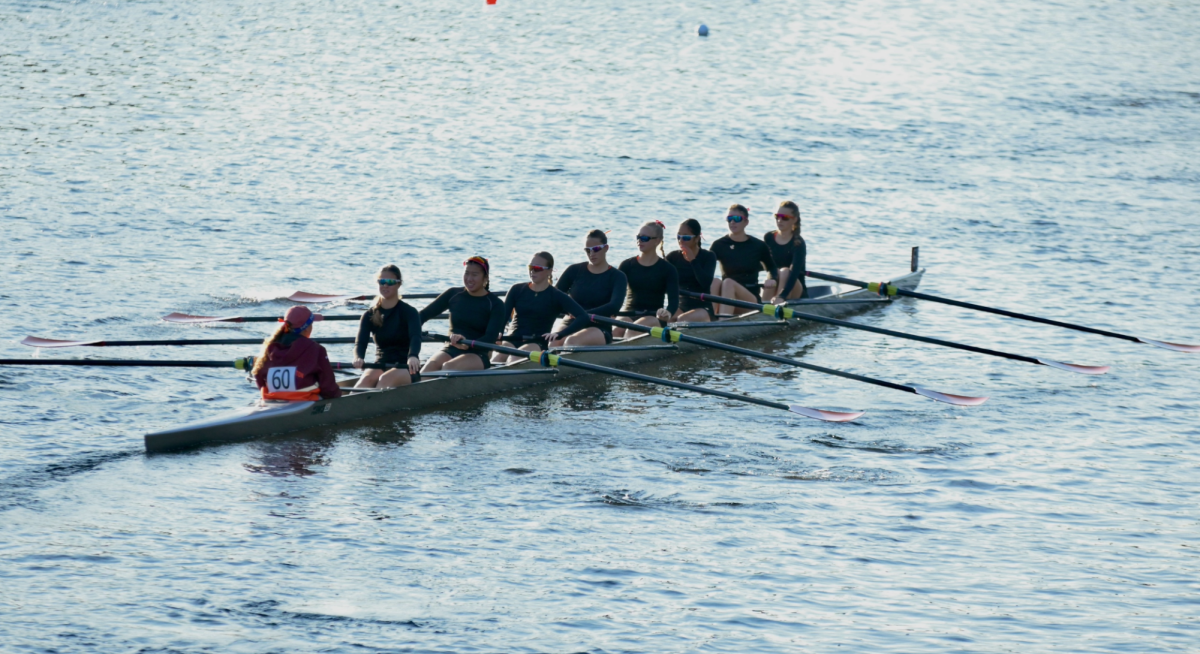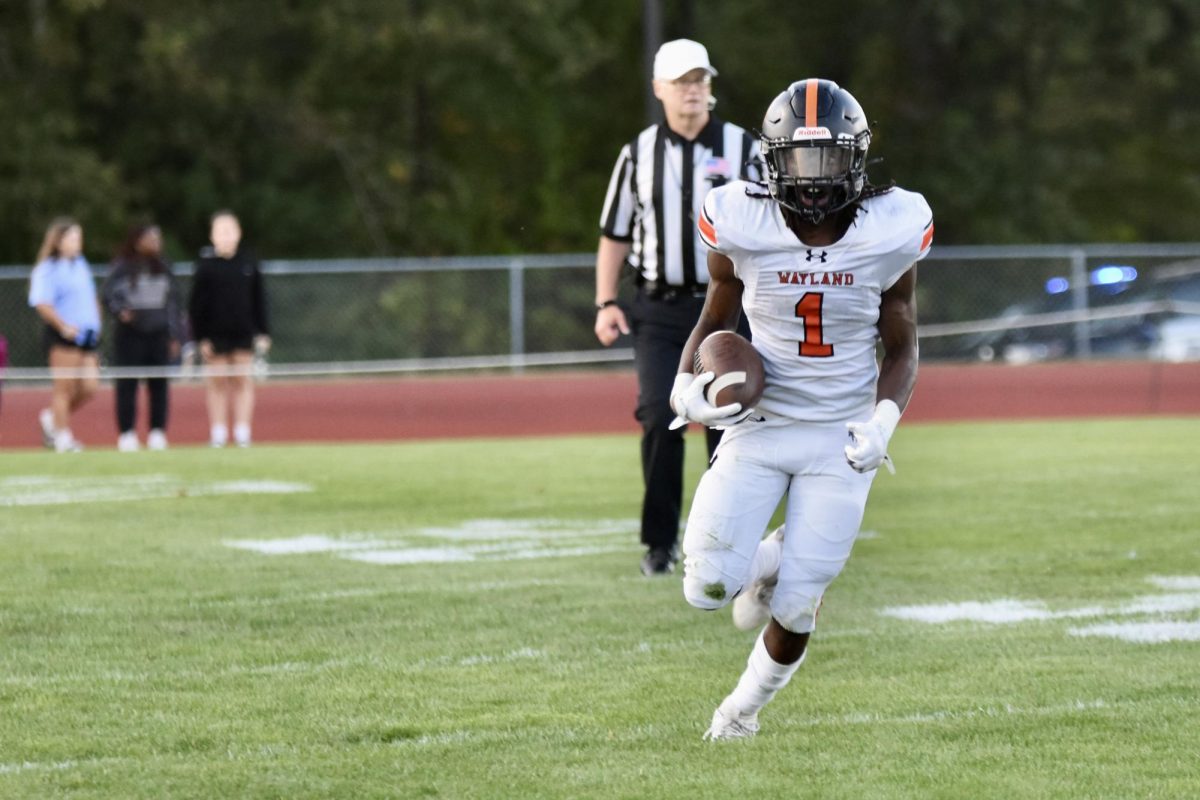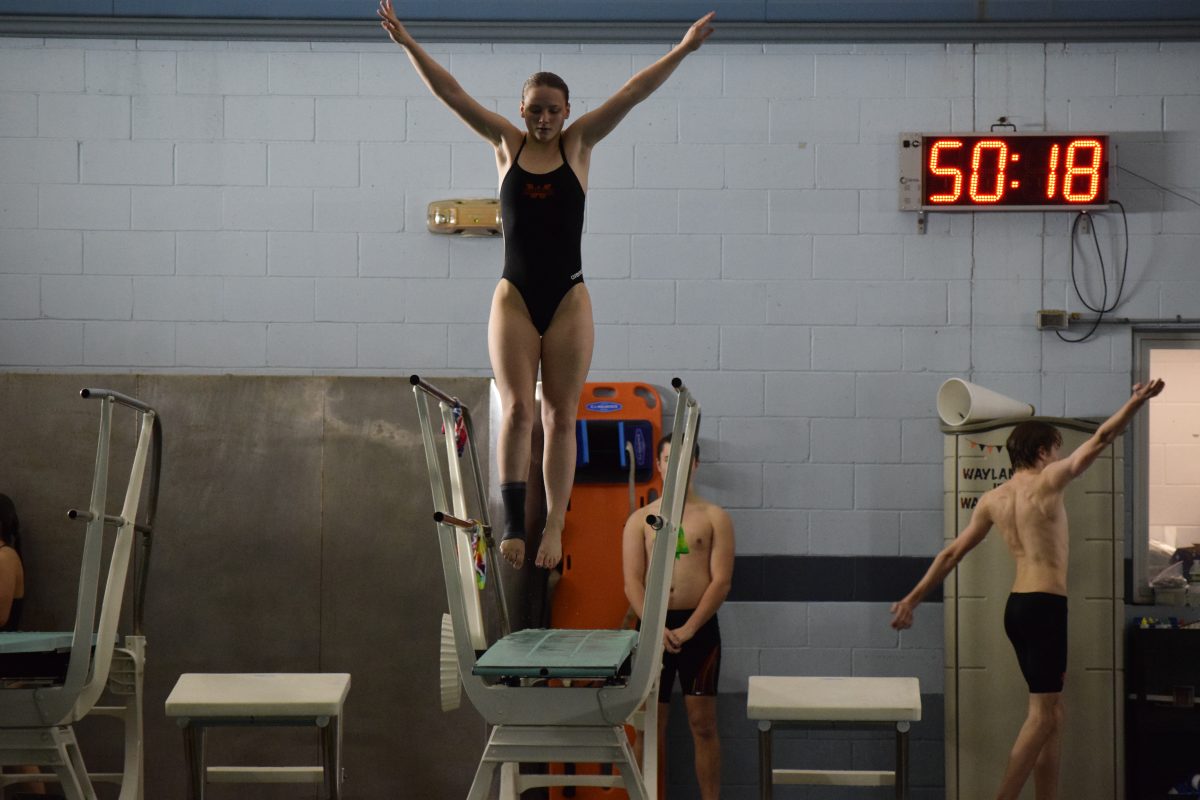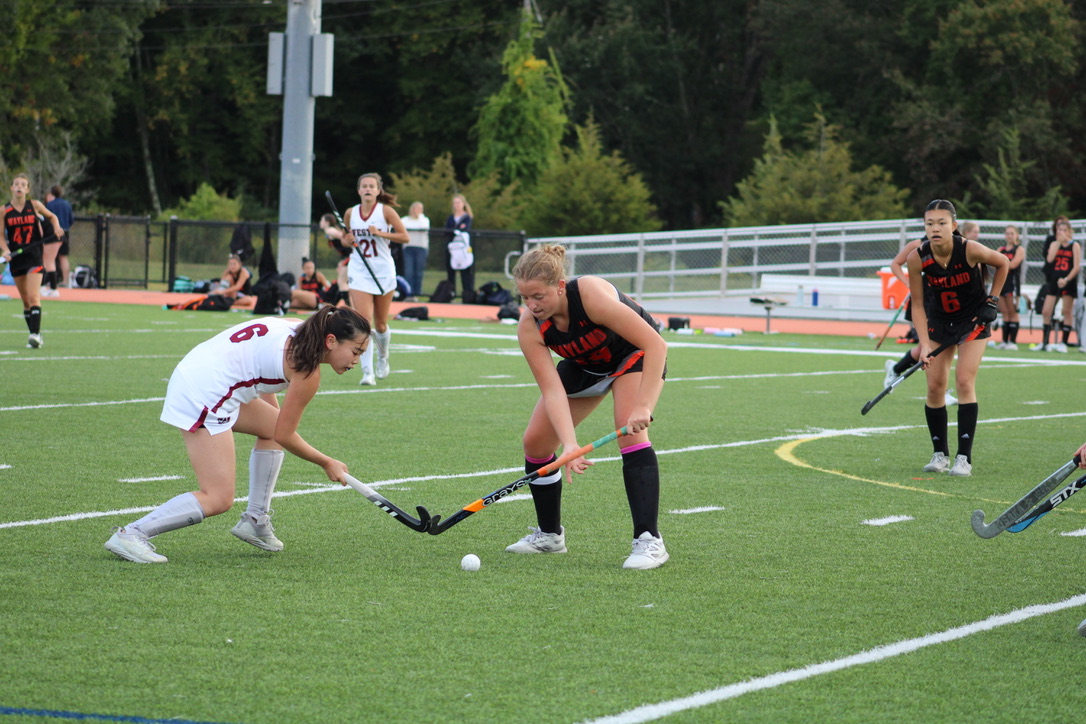Wayland High School’s swim and dive team is an accomplished group. This year, the girls team ended their season with a 15-0 record and the boys team ended with a 15-1-1 record. In addition to the countless hours of practice the members of the team put in, some WHS swimmers and divers have also had to navigate an aspect of the sport which spectators may not necessarily expect: injury.
Although the swim and dive team is a joint unit, the two activities result in different injuries. Senior Mia Mee has experienced several injuries throughout her diving career.
“[At first], I was surprised by the bruises that the water gives you when you land wrong in diving,” Mee said. “I think that a lot of people forget that water can break bones if you fall from high enough.”
There are a lot of things that can go wrong while diving. If a diver makes a mistake before taking off from the diving board, it is possible that they hit the water wrong. Also, it is possible for divers to hit their heads on the diving board on their way down.
“Hitting the diving board would obviously be bad, it’s metal,” senior Julia Sun said. “It’s always been a fear of mine that I would hit my head. Smacking the water hurts, but you’re not going to be seriously injured most likely. Hitting any body part on the board is likely to be a pretty bad injury.”
In addition to the potential for injury that divers experience, swimmers can also sustain injuries from their sport, though typically to a lesser extent than divers. Some members of the swim team find that they receive injuries not only from overexertion, but from contact between other swimmers, or equipment.
“I always joke that swimming is kind of a contact sport because so many people are in the same lane,” senior AJ Bell said. “I know some people who have had to put braces on their fingers because they’ve hurt their fingers from jamming it into the lane line.”
Some WHS athletes who dive outside of school in addition to being on the high school’s team, acknowledged that the condition of high school diving is less conducive to injury than it could be.
“High school diving only allows for people to compete on one meter boards which is not very high,” Mee said. “I see much worse injuries at club diving, where I also compete on three meter boards and practice platform diving occasionally.”
High school diving boards are typically only one meter tall, however, the height of the board can vary, with professional boards often being 10 meters tall. The three meter and taller boards that some Wayland divers use outside of school often cause more frequent and severe injuries.
“I smack the water a lot at club,” Sun said. “I do three meter [diving], and at the high school we only have one meter. So [one meter] is really not that bad, but on the three meter I’ve definitely gotten bad bruises.”
Some of the team members have been injured multiple times while on the team, sustaining injuries of varying degrees of severity.
“I have experienced numerous minor injuries such as cuts and bruises from hitting my head, hands, feet and legs on the board,” Mee said. “The worst that I have experienced from diving was rolling my ankle on the board, which turned out to be a sprain and I had to be in a boot for a few weeks.”
In addition to bruising and sprains, some members of the swim and dive team also endure chronic injuries during their time on the team.
“I got a shoulder injury one summer while I was swimming and it’s been affecting me for the second half of high school,” Bell said. “Shoulder injuries are super common [in swimming], and I know people who have knee injuries [too]. Those are two really big injuries [for swimming].”
Some students who have had bad pool injuries learn how to recover quickly and prevent avoidable injuries through their experiences. It is for this reason that some members of the team find that they are able to continue competing, even when they have recently sustained injuries.
“For injuries just really make sure you take care of yourself,” Bell said. “I finally started taking care of [mine] this year and it felt a lot better and I wasn’t hurting as much. So definitely address your injuries, take care of them and talk to your coaches about it too.”
For those interested in joining the high school’s swim and dive team but are worried about the potential for injury, team members have some advice about dealing with injuries and the recovery process.
“My best advice would be that injuries are only a temporary set back and some of the best and most valuable lessons I have learned come from the recovery process,” Mee said. “Nevertheless, the swim and dive season is very long so it’s important to take care of your body so you can perform your best.”











